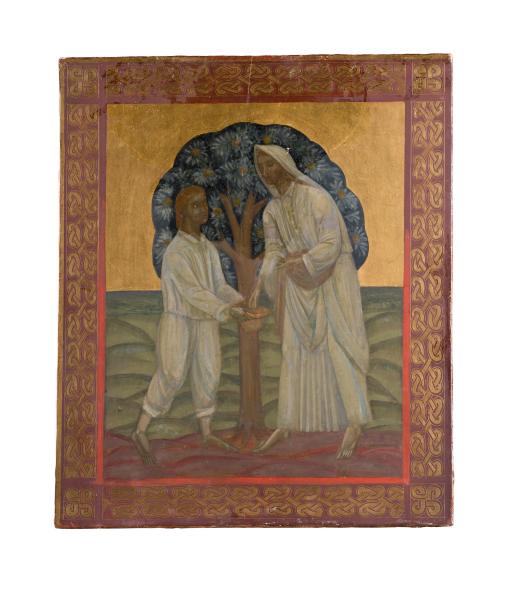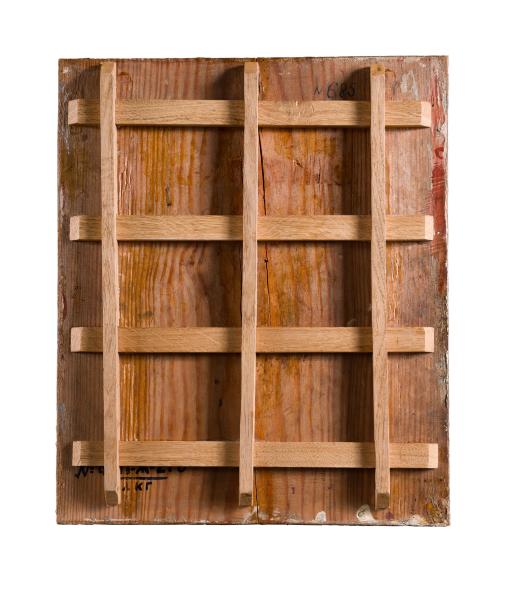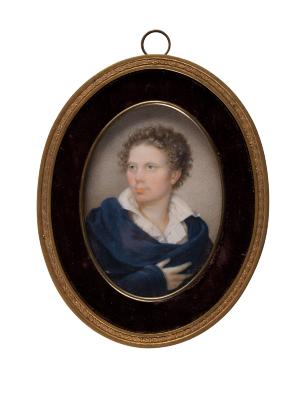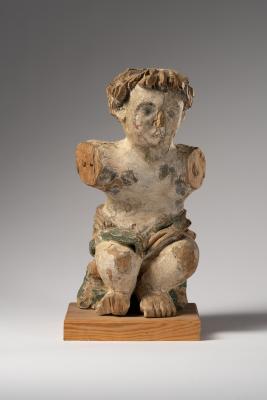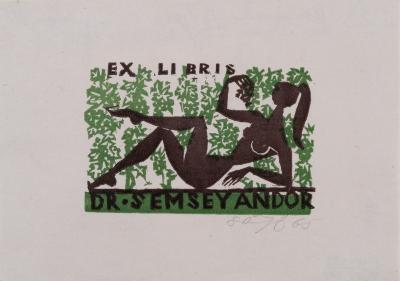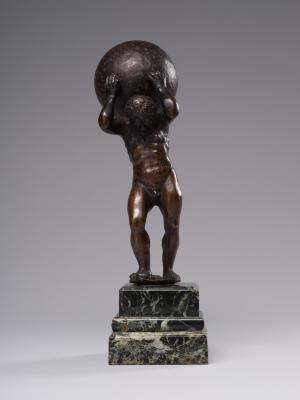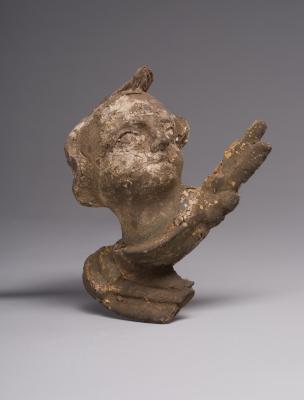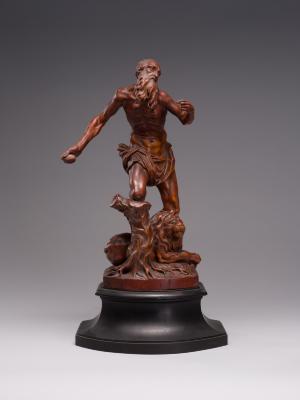The work ''Couple Under a Tree'', the so-called secular icon, is a unique icon-painting of the early period of Boichuk's creative work. The work was performed in Lviv between 1910 and 1914. It was at that time that the artist’s individual creative mission to create a national monumental style by synthesizing Byzantine icon-painting traditions with decorativism and the symbolism of folk primitivity was clearly defined. The Byzantine tradition can be traced in Boichuk's artworks of the Lviv period that lasted from 1910 to 1914; it manifests itself in a golden background, a reverse perspective, and the associated conditionalism in the images. At that time, he tried to rethink the inner essence of the Biblical images and depict them in the style of the artist of the twentieth century. In this sense, the painting ''Under the Apple Tree'' is a programmatic work. This work is often referred to as an icon, as it is painted in tempera and gold on a board in an iconic style. The plot image of the canvas is deeply symbolic, as it is inspired by the image of "Fruit Tree'', and "Garden" by Hryhorii Skovoroda. In the center of the composition there is a tree. This apple tree with fruit is a Christian symbol that appeals to the moment of the sin of Adam and Eve. The first level of the icon-painting is symbolic; it leads us to the Christian tradition. Such symbolism is characteristic of folk art in general. According to the principle of symmetry, the tree is placed in the middle of the icon-painting, and according to the method of painting, it is rather a conditionally stylized image in the folk style than a tree depicted in the realistic style. Under the apple tree, in the best traditions of the folk genre, there are two people, namely a woman and a guy, who fetch fruit which are abundant on the tree. These figures are also arranged on the principle of symmetry, as the guy stands on the left, and the woman on the right side of the tree. The image of the "Tree of Life'' is very common in the works by Boichuk and his students. The archetype of the "World Tree" combines ideas about time, space, life, and death. The medieval braided ornament, which traces its origins to the teratological pagan braid, is also used in the work; it symbolizes the combination of all things and continuity, as well as encloses the images in a self-sufficient and immutable world. In 1973, this unique exhibit item got into the collection of Lviv National Art Gallery from the private collection of Yaroslava Muzyka, who closely worked with Boichuk and his followers during the Lviv period of the artist's life. Yaroslava Muzyka lived in a house on Charnetskyi Street (now Vynnychenko Street, 26), where Boichuk's studio was located; she managed to preserve a significant amount of archival material and some works that remained after the artist’s moving to Kyiv.



